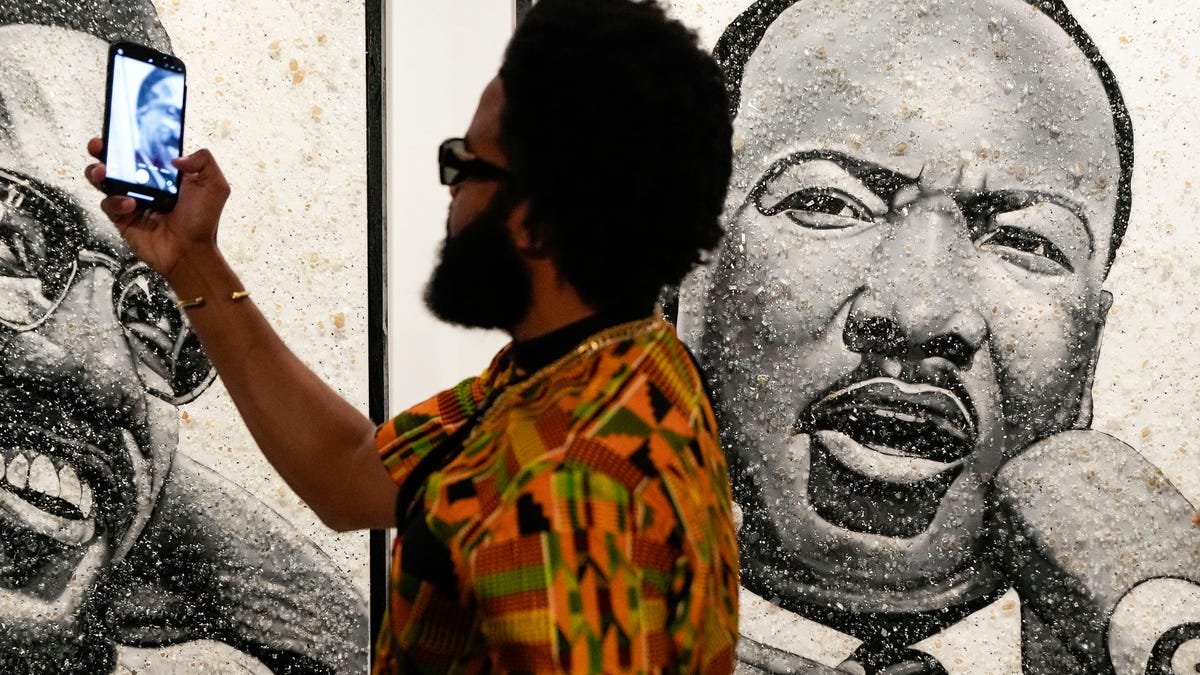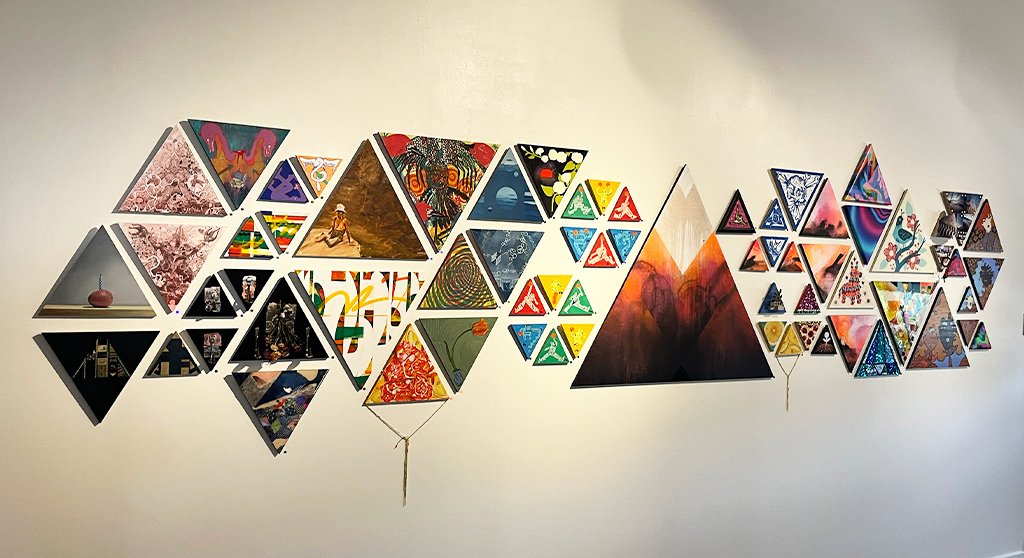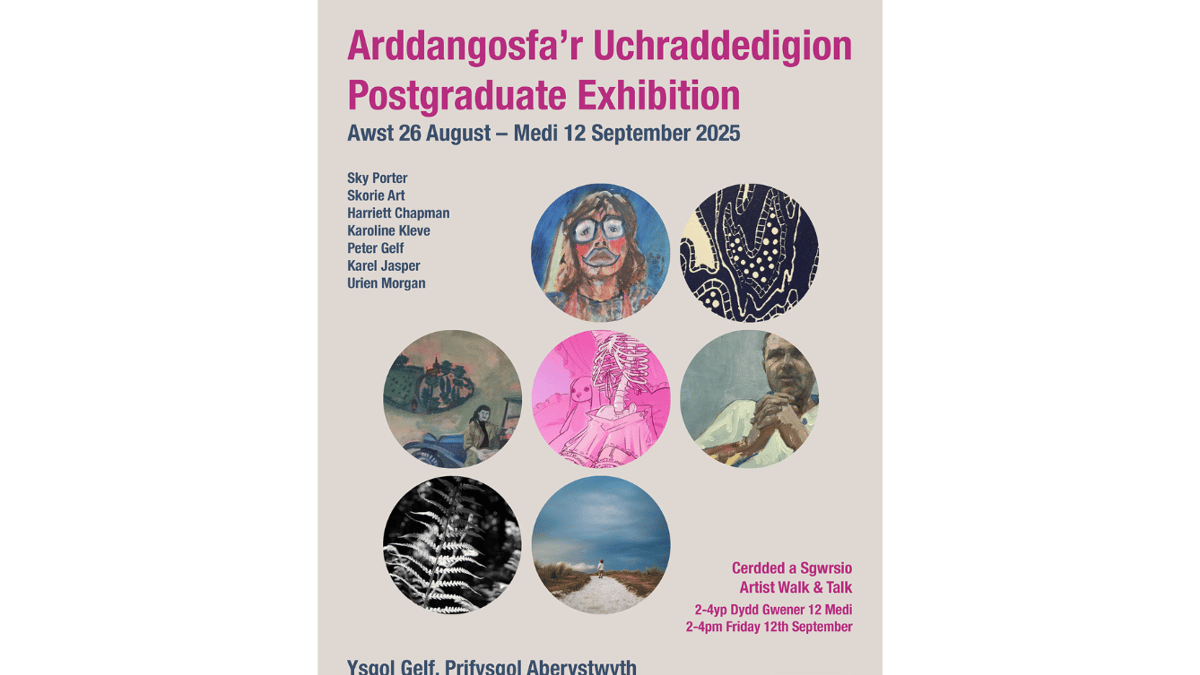In his 1968 print Remaining Words, Israeli artist Dov Heller wrote in blocky Hebrew letters: “I finished reserve duty on Friday/I was in Gaza they threw rocks there/Today I want peace more than ever.”
The work, created not long after the 1967 Six-Day War, was never exhibited during Heller’s lifetime—he died in 2018. The print, along with numerous other works, was found tucked in a drawer at his home in Kibbutz Nirim, a community along the border with Gaza, where he lived for most of his life. At the time of the work’s making, Israel had just seized control of the Palestinian territory from Egypt, before ultimately withdrawing in 2005. That piece, along with eight others, is now being exhibited for the first time in Kibbutz Sometimes, a solo exhibition open at the Mishkan Museum, an art museum in northern Israel.
“Heller returns from reserve duty and writes a text—in real time, which I think is super radical,” Avi Lubin, the museum’s chief curator, and the curator of the Israel Pavilion at the 2019 Venice Biennale, told ARTnews. “This is a work from 1968 but I’m convinced he would say the same thing today, that despite what happened and despite the horrors of October 7 and despite everything Hamas did and everything Israel is doing in Gaza—we must find the way to make peace and talk.”
The exhibition is the second in a series that Lubin has devoted to artworks from towns along the Gaza-Israel border that survived the October 7 attack by Hamas. The curator, who has been a frequent figure at protests in Israel calling for a ceasefire and hostage deal, links the series to the historic mission of the Mishkan, which began in 1937 with the goal of salvaging European Jewish art and culture at risk of destruction. In the weeks after the attack, Lubin considered what became of the works by several artists active in the kibbutzim and towns that were targeted that day, which the museum considers part of its broader goal to “preserve the works of Jewish artists from communities that no longer exist,” per the Heller show’s description.
Other Israeli museums have also addressed this question, with Jerusalem’s Israel Museum installing a shrapnel and bullet-damaged landscape painting by Be’eri-based artist, Ziva Jelin, in November. A solo exhibition of photographic still-lifes by Osnat Ben Dov was on view at the time of the attack at Be’eri Gallery, an art gallery incinerated during the Hamas attack, and was restaged at the Janco Dada Museum in December.
Lubin waited until April, when it was permittable to go to Nirim, to select works from Heller’s estate, noting when he was there that a structure close to Heller’s storage had previously been hit by a rocket. A painter, sculptor, and printmaker who established an etching workshop in Nirim’s defunct cowshed, Heller was best known for socialist and autobiographical works, like those that explored his separation from his parents due to the Holocaust.
(Heller was born in 1937 in Bucharest; his parents emigrated to British Mandatory Palestine in 1939 and he was unable to join them until 1949).

Rabuba, 2010-2011, Dov Heller.
Courtesy of the Mishkan Museum
In the Mishkan exhibition, however, Lubin felt it was critical to show another side of Heller.
“It was important to me to put his political work at the forefront,” said Lubin. “He was a man who lived until 2018 and, despite years of war and rockets and conflict, he kept working towards dialogue.”
Like many who lived in kibbutzim along the Gaza border, Heller had deep political commitments, both as a Marxist and as one devoted to peace with Palestinians. (It is a bitter irony for Israelis that the communities attacked in October were typically home to some of the country’s most devoted peace activists.)
Kibbutz Sometimes highlights Heller’s seldom-exhibited works. A 2010-2011 etching titled Rabuba, of a bird perched on the trunk of a potted tree,comes from Heller’s late Tel Gamma series. Made after Israel’s 2009 war against Hamas, it recounts the tragic story of Majda Abu Hajaj and her mother Raya Salama Abu Hajaj, two Palestinian women fatally shot in an incident with the Israel Defense Forces. (While an investigation was inconclusive, witnesses at the time said the women were shot by IDF soldiers while carrying a white flag and fleeing fighting.)
Heller often used baskets and birds as motifs for works about his own life.
“He connected his biography with their biography and his images with the images of Tel Gamma,” Lubin said, explaining how Heller intermingled his personal visual language with individual stories from Gaza to highlight their shared humanity.

Dov Heller’s print titled The Green Line, 1972.
Courtesy of the Mishkan Museum
Another work, a print titled The Green Line, was made in 1972, exhibited a year later, and never since. For those who don’t live near a border, it can be an abstract concept. Heller, confronted by the border every day of his life, rendered it unflinchingly real. In the work, a rough swathe of emerald green hangs beneath a wire fence, referencing the demarcation line defined in the 1949 Armistice Agreements between Israel and its neighbors. For Heller, the line represented an omnipresent literal barrier that prevents dialogue between two peoples.
Shortly before his death, Heller met Haran Kislev, an emerging artist living in nearby Kibbutz Be’eri who was also creating images of the border. The two met at the opening for The Road to El Bureij, a 2017-2018 exhibition at Be’eri Gallery showing Kislev’s abstracted landscape paintings depicting a path between Be’eri and the El Bureij refugee camp in Gaza. For over a decade, Kislev has painted the landscape around Be’eri as, in his artist statement, “in the shadow of an armed struggle, concrete roadblocks near the border and the constant presence of armed forces.”
“Haran peers outwards and documents the blocked road, the changing light, atmosphere, and landscape, capturing the political interruption and estrangement,” artist Etti Abergel wrote in that exhibition’s catalogue. “The intense beauty erupting from his paintings stresses the horror and anxiety, the missed opportunities, the obstructed feeling of existing between the studio and reality, between the painting and the geographical location, between a utopia and its downfall.”
For Kislev, who carries on Heller’s legacy of engaging with the border, the series has taken on new meaning since October 7. Kislev was born and raised in Kibbutz Be’eri and was there with his wife and two children during the attack.
“That’s where they broke into the kibbutz from,” reflected Kislev. “There was always this fear in the paintings, of ‘what would happen if? If there was a very, very big catastrophe. And what does it mean to live there?’ This bubbling of the earth is something that preoccupied me for many, many years.” Since October 7, Kislev and his family have been displaced to a kibbutz in central Israel and he moved his work to a temporary studio in Tel Aviv; while repairs and reconstruction of Kibbutz Be’eri are underway, resettlement is currently slated for sometime in 2025.
Kislev’s work, in many ways, prompted the Mishkan’s ongoing series showing works that survived the attack. His last series produced in his Be’eri studio formed the basis of the first exhibition, Kibbutz Anxiety, which opened in December. It included nine works that the artist evacuated in a complex multi-trip process that involved military permits and the aid of a nonprofit organization—since regular movers weren’t allowed in the area—all during a period of frequent rocket attacks from Gaza. The exhibition, ironically, saved the artworks.
“A week after we removed [the paintings] a rocket or something fell in the area and the roof above where the works had been kept was completely destroyed,” Kislev said. “If we hadn’t done the exhibition, it all would have been destroyed.”
Lubin is continuing to work on the exhibition series, but at a wartime pace.
“Everything is very sensitive and I’m trying to do this very slowly together with the artists and their families, in order to understand what their needs are,” Lubin said. “I thought about one person and understood that this person is in a difficult emotional state, and that it’s better to wait at the moment.”
Returning to Heller’s Remaining Words, the artwork gracing the invitation to the opening of Kibbutz Sometimes, Lubin is unsure how audiences will respond to this print and the other artworks in the show.
“I think there are two components to our responsibility as a museum. One is to express solidarity and promote healing and extend a hand,” Lubin said, recounting how the museum immediately began hosting daily activities and workshops for the many displaced families in the area. In October alone, the museum hosted roughly 5,000 displaced Israeli children.
“In parallel, as a museum, we can’t only be a place of refuge and healing. We must also ask questions and challenge ideas. And part of our role, in this moment, is to not forget the questions: Where are we going, how do we move forward, and what is our future here?”







